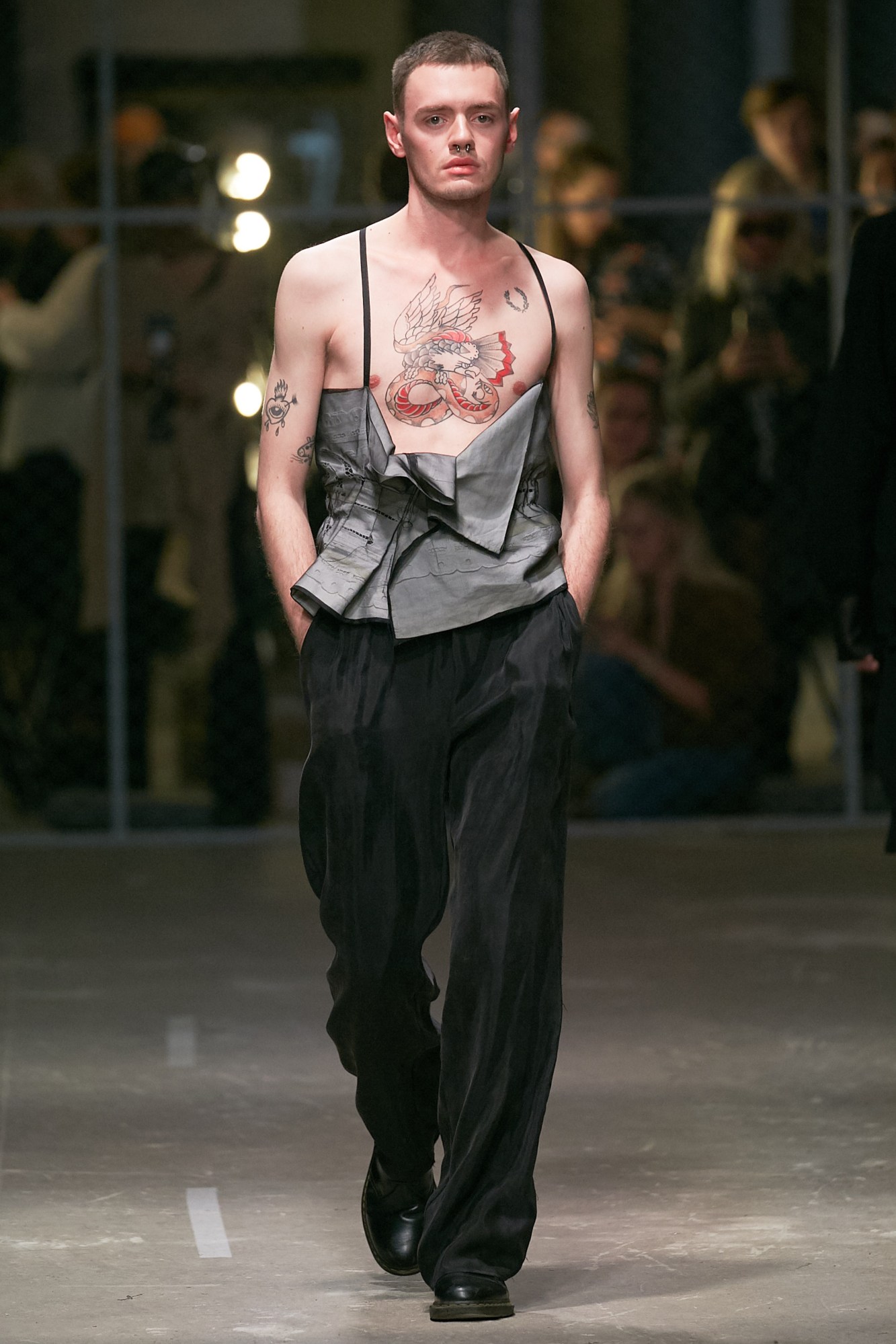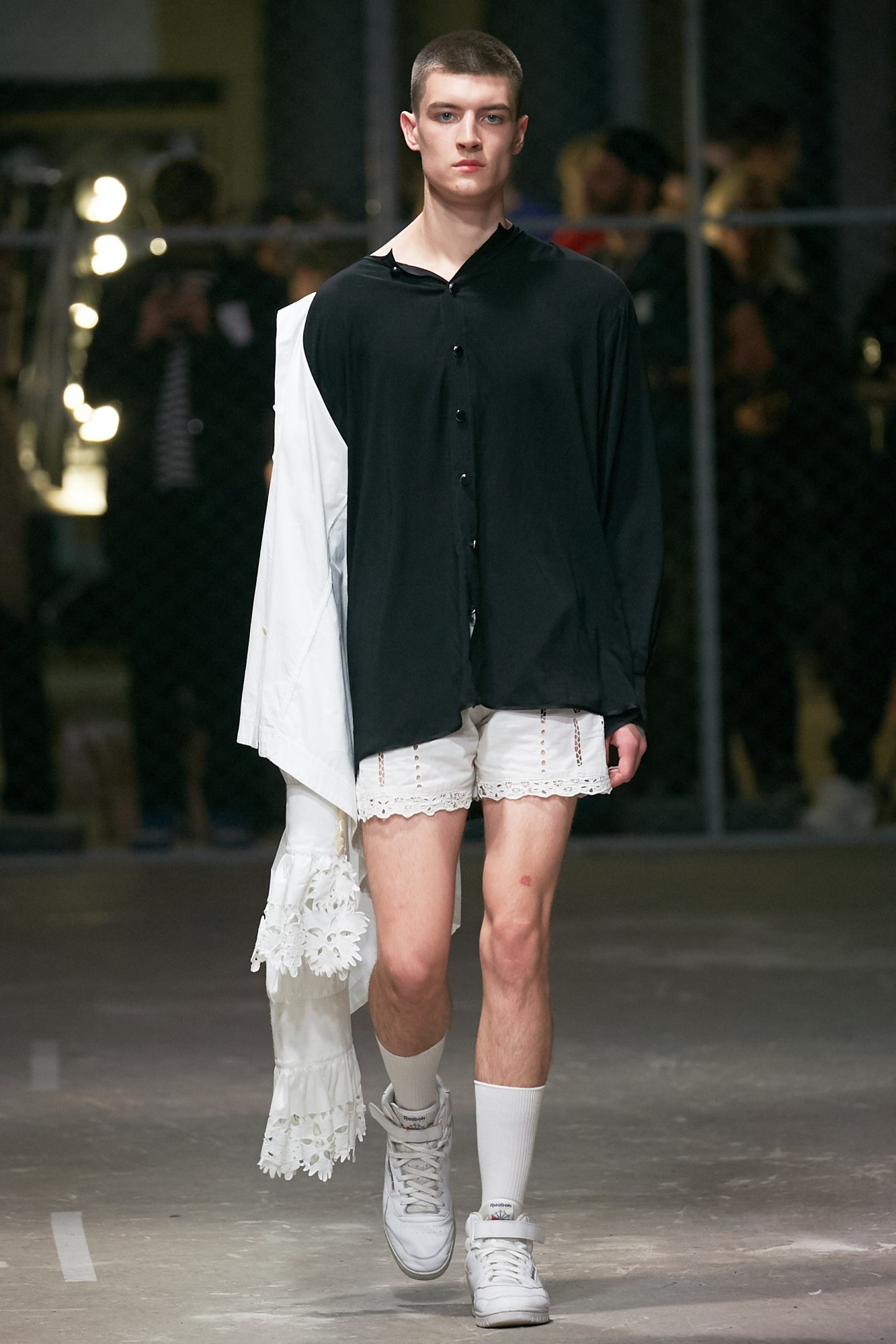The Museum of Moscow doesn’t have the same swagger as the opulent state museums surrounding Red Square. But it was the most exciting place to be on the first day of Mercedes-Benz Fashion Week Russia, when the city’s most talented emerging designers debuted their new collections as part of the “Futurum Moscow” showcase. And the showcase itself wasn’t without its own moments of dizzying splendor. Nikita Kalmykov’s ODOR infiltrated the otherwise streetwear-heavy lineup with an audaciously delicate collection of fine Richelieu lace intimates, beautiful Victorian blouses fastened with vintage Soviet buttons, and a body-engulfing silk nightgown that could be Moscow’s answer to Batsheva.
Kalmykov, as it turns out, has also drawn inspiration from the biblical Holy Land, dedicating his first collection to Israel and the Jewish community he encountered on a recent visit. Though there’s nothing orthodox about ODOR. Kalmykov is rather inspired by hedonism and an intangible sense of freedom, particularly when it comes to sexuality. This makes the brand still more subversive in a city where prejudice remains rife. But Moscow also has its own rich history of diversity. After the Futurum show, where ODOR’s young tribe of androgynes walked to a euphoric blend of French techno and Donna Summer, i-D talked to Kalmykov about creating and collaborating in the Russian capital.
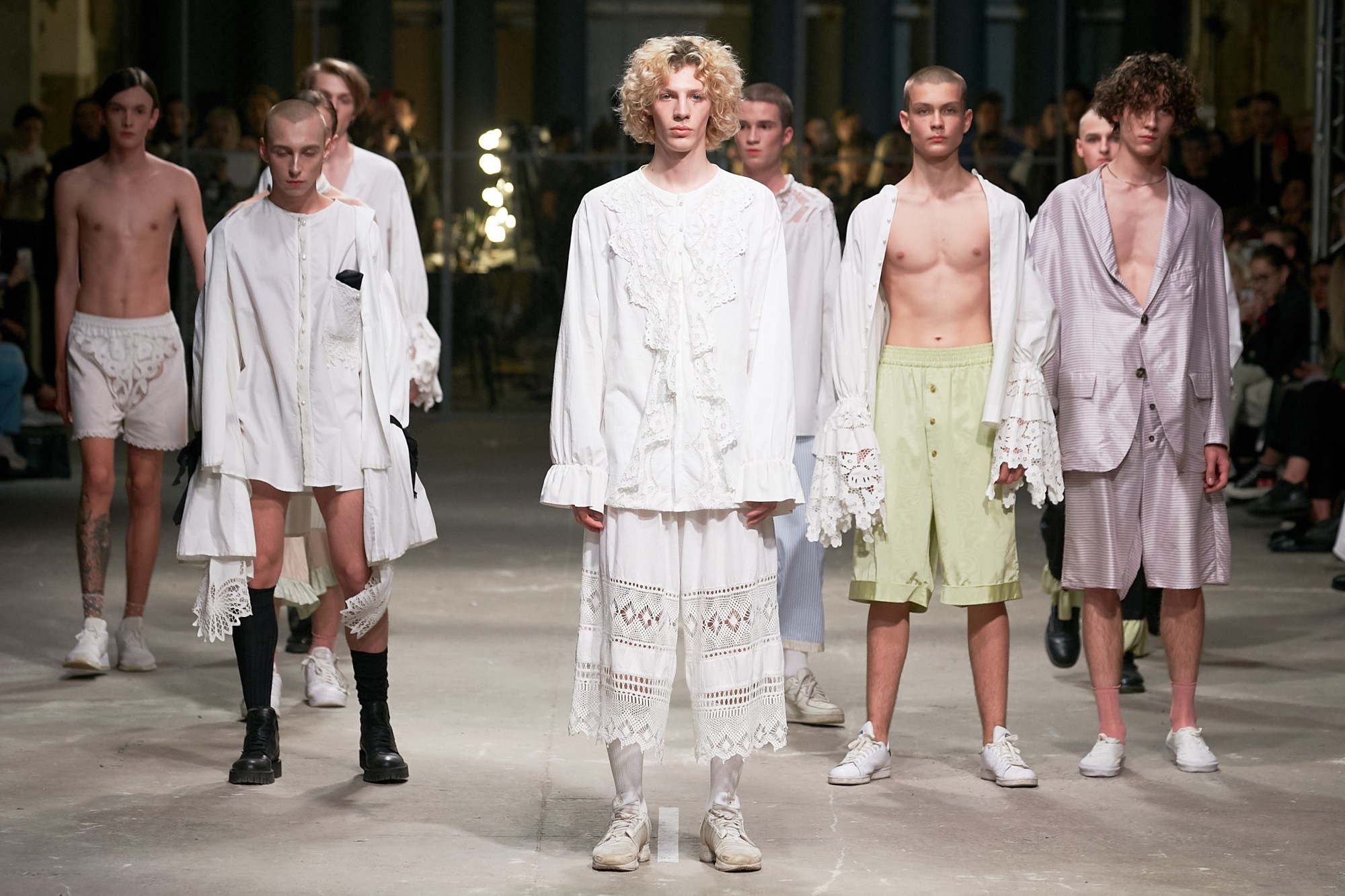
What were you doing before you launched ODOR?
After I graduated from university three years ago, I worked for mass-market companies and made collaborations in Russia, Germany, and UK. Straight after my internship in Germany I realized that I need to start working on my own brand profoundly and produced my first proper collection, inspired by Israel.
You’ve said the name ODOR is a reference to different notes of scent. What else inspires your design?
I am inspired by people, and when I speak of scents, I mean exactly olfactory associations with particular individuals. I am also thrilled by traveling, unexpected occasions [I find myself in], multisensory atmospheres that form around me. Every detail is important to me, and when everything shapes into a harmonic picture, then it’s time to start a new collection.
What fabrics do you use in your designs and where do you source them? Is it hard to find materials?
When I launched my brand, I considered current fashion market overstocking, [which meant following] tendencies of sustainability and searching for unique design solutions. I decided to use vintage fabrics and fittings, giving second life to the materials I found at flea markets. The very process of searching is exciting and becomes a part of my inspiration for each collection. I travel, hunt materials, make moodboards, and complement the treasures I find with basic organic fabrics.
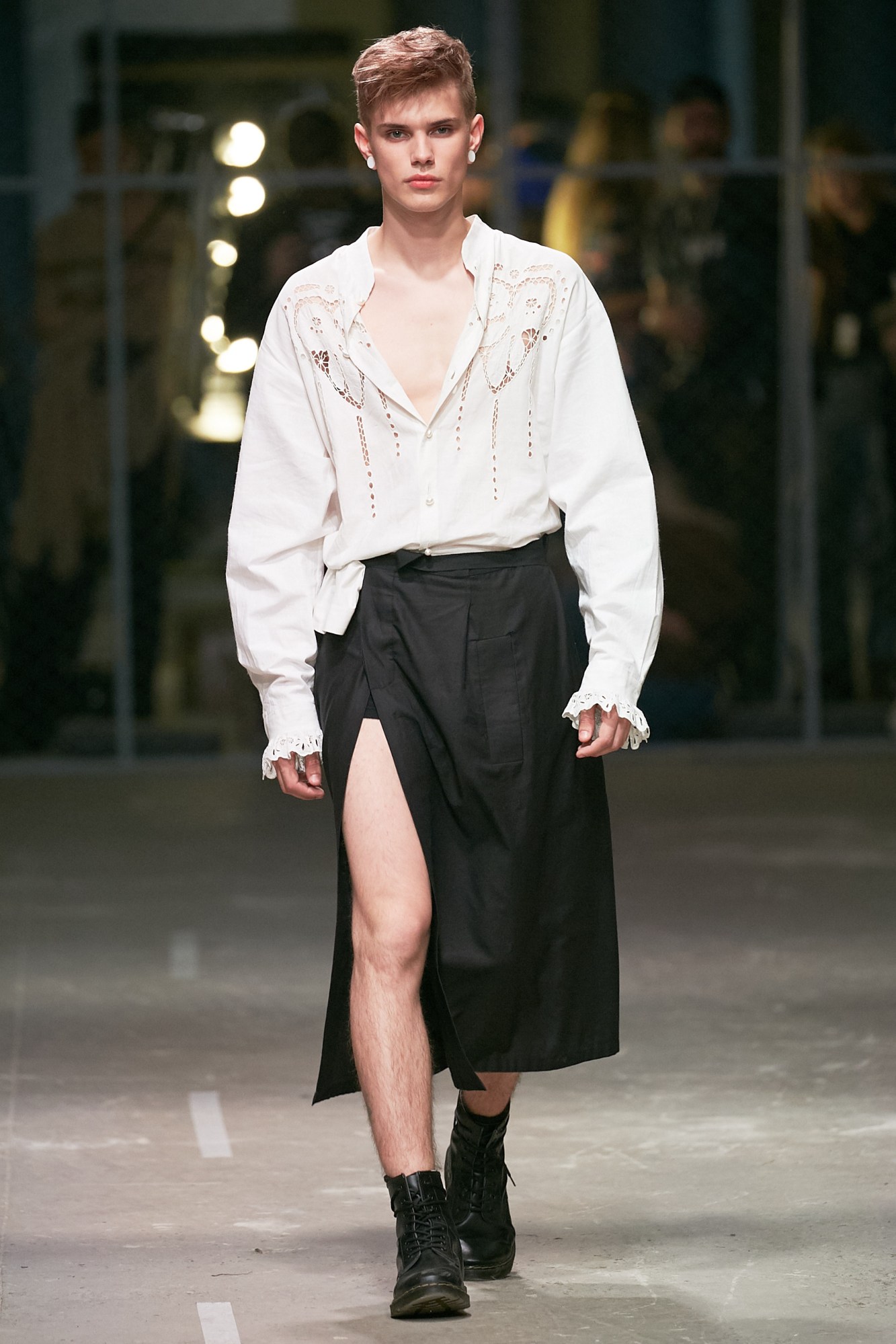
What is your favorite thing about the young creative community in Moscow?
I really like that young people travel a lot nowadays and aren’t attached to one place of living. I like that nobody is afraid of making exhibitions, organizing alternative biennales, and making music. There are so many possibilities for collaborations.
What has been the most challenging aspect of launching your brand?
I still have no investors and funds, so each new collection is a challenge. That’s why I focus on making capsule collections now, not even thinking of mass production.
What is your casting process? Are your models people you know personally?
The casting was really difficult and challenging. It lasted several days, my friends were helping me. The most part we found on Instagram, some models were professional models from agencies. I like diverse models. It shows that my customer doesn’t belong to one type.
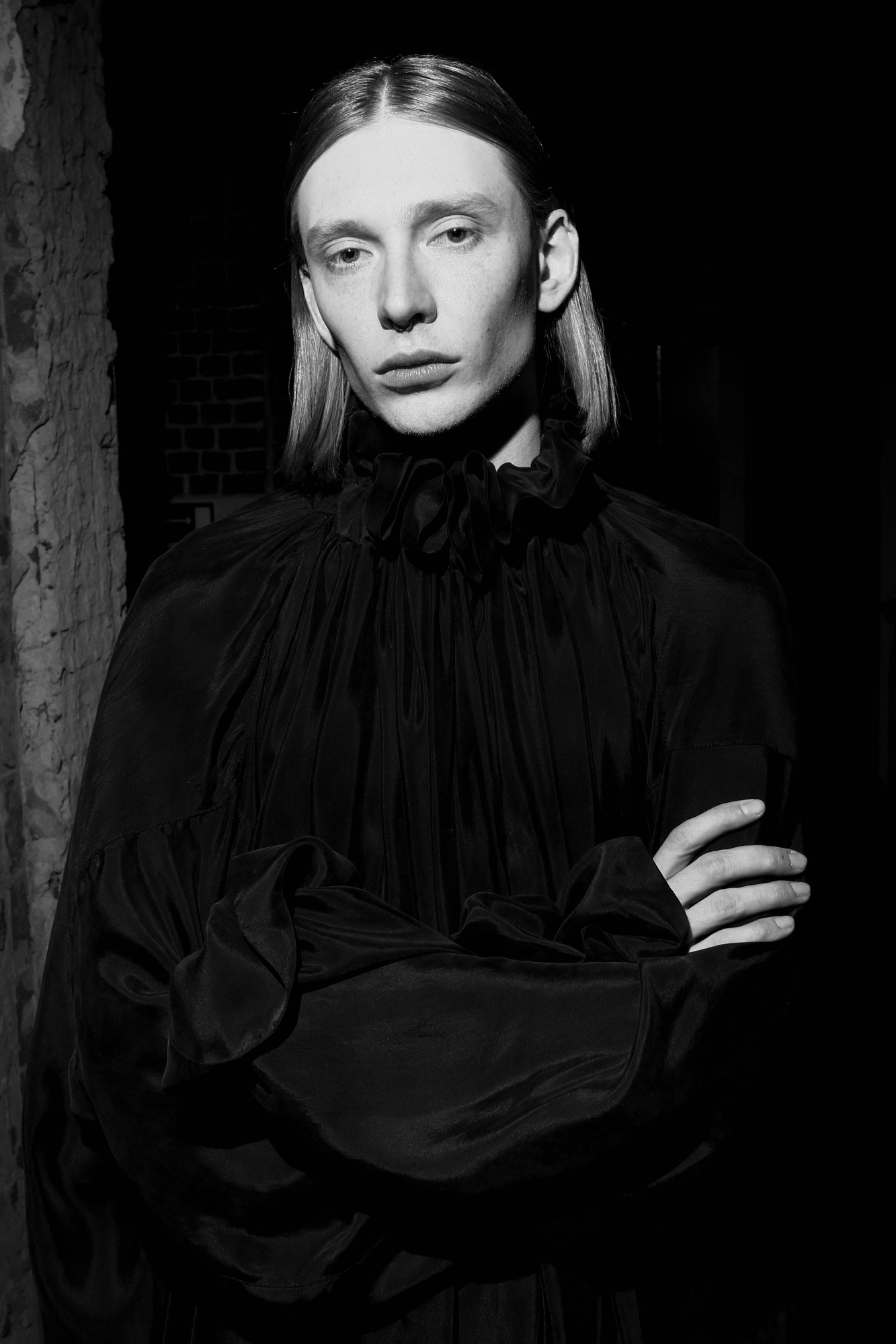
What is the traditional understanding of masculinity in Russia and what is your personal understanding of it?
The Russian understanding of masculinity means following an enormous number of stereotypes and clichés. Frugal nondescript clothes, homophobia, sloppiness, and negligence — these are factors that speak of you being a real man in the vast area of Russia. For me, the real man is a person with an absolute inner freedom, with open sexuality and non-stereotypical thinking. I shoot my garments on various people around the world on purpose. It’s to emphasize the each individual, to show different masculinity.
Americans often think of young Eastern European fashion as being a lot of 90s post-Soviet streetwear, which makes ODOR feel very refreshing by contrast. Are they any specific eras you are nostalgic for or inspired by?
This is what I’m trying to achieve. Firstly, I don’t associate myself with Eastern Europe, especially with the 90s aesthetics, as I was just a kid back then. Second, my collections are a materialization of sexual experiences and olfactory affections. I get excited by unexpected encounters and moments of my life. They turn into nostalgic memories and further become basis for fashion collections. Direct quotations from the past and seasonal trend-following is unacceptable for me.
